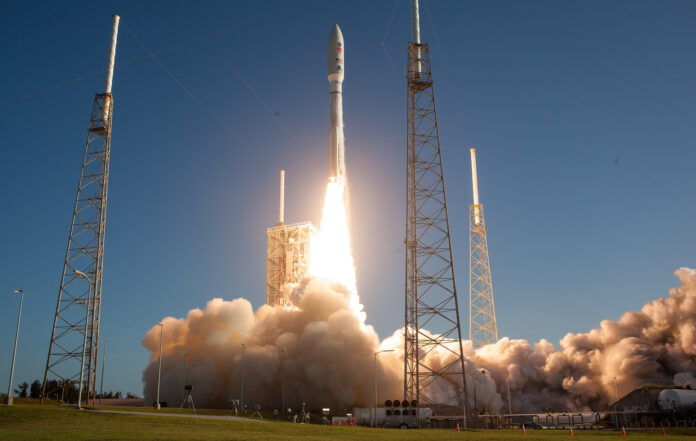The Perseverance rover and its Ingenuity helicopter are on their way to Mars.
The spacecraft carrying the rover and helicopter successfully launched to Mars Thursday morning aboard a United Launch Alliance Atlas V 541 rocket from Cape Canaveral, Florida at 7:50 a.m. ET. The team in the control centre at NASA’s Jet Propulsion Laboratory confirmed the acquisition of signal from the spacecraft shortly after 9 a.m. ET. The launch took place after the Jet Propulsion Laboratory (JPL) facility in Pasadena, California with the mission engineers was rattled by an earthquake.
Perseverance is due to land on Feb. 18 2021 at the base of an 820-foot-deep (250 meters) crater called Jezero, site of a former lake and water system from 3.5 billion years ago that scientists suspect could bear evidence of potential past microbial life.
Mission Overview:
The Mars Perseverance rover mission is part of NASA’s Mars Exploration Program, a long-term effort of robotic exploration of the Red Planet. The Mars Perseverance mission addresses high-priority science goals for Mars exploration, including key questions about the potential for life on Mars. The mission takes the next step by not only seeking signs of habitable conditions on Mars in the ancient past but also searching for signs of past microbial life itself.
The Mars Perseverance rover introduces a drill that can collect core samples of the most promising rocks and soils and set them aside in a “cache” on the surface of Mars.
The mission also provides opportunities to gather knowledge and demonstrate technologies that address the challenges of future human expeditions to Mars.
These include testing a method for producing oxygen from the Martian atmosphere, identifying other resources (such as subsurface water), improving landing techniques, and characterizing weather, dust, and other potential environmental conditions that could affect future astronauts living and working on Mars.
The mission is timed for a launch opportunity in July/August 2020 when Earth and Mars are in good positions relative to each other for landing on Mars. That is, it takes less power to travel to Mars at this time, compared to other times when Earth and Mars are in different positions in their orbits. To keep mission costs and risks as low as possible, the Mars 2020 design is based on NASA’s successful Mars Science Laboratory mission architecture, including its Curiosity rover and proven landing system.

















































